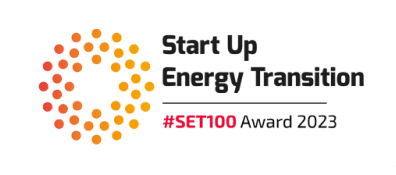
August 4, 2023
How Enline's Technology Reduces Cost
In the ever-evolving landscape of the energy industry, cost reduction remains a paramount goal. Enline's Digital Twin technology is at the forefront of this pursuit, offering a groundbreaking approach to operational efficiency and design optimization. This article explores how Enline's unique application of Digital Twins is revolutionizing the energy sector, leading to significant cost savings and setting the stage for a more sustainable future.
Cost Savings Through Operational Efficiency
Enline's Digital Twin technology plays a pivotal role in enhancing operational efficiency, which in turn leads to significant cost savings. The technology provides a real-time view of the entire energy system, allowing operators to identify inefficiencies, predict equipment failures, and optimize energy generation and distribution.
One of the key ways Enline's technology improves operational efficiency is through its predictive capabilities. By continuously updating the Digital Twin with real-time data, the technology can predict potential faults and critical events. This allows operators to take preventative action before a failure occurs, avoiding the high costs associated with equipment failure and unplanned downtime.
Digital twin concept can be applied to power system elements to identify operating risks such as the occurrence of thunderstorms, overvoltages, wind galloping, etc. By identifying the branches or elements submitted to those risks the power can be reroute, power factor can be reset or other actions can be taken to minimize outages and fines.
Specifically for transmission lines, Enline’s technology can optimize the asset remaining lifetime. It provides detailed information about the status of the line, considering factors such as the type of towers and cables, electrical and electromagnetic limits, and weather conditions. This information allows operators to make informed decisions about how to best use their assets, leading to improved efficiency and reduced operational costs.
Furthermore, by providing real-time and predictive dynamic line ratings and maximum allowable loads, Enline's technology enables customers to fully utilize their existing installations up to their limit. This means that customers can avoid the high costs associated with constructing new installations.
In summary, Enline's Digital Twin technology drives operational efficiency by providing real-time insights, predicting faults, and optimizing energy assets. These capabilities lead to significant cost savings, demonstrating the value of this technology in the energy sector.
Cost Savings Through Design Optimization
Another significant way Enline's Digital Twin technology reduces costs is through design optimization. When planning new installations, the technology can be used to optimize the design, leading to savings on materials and construction costs.
Enline's intelligent algorithms can save up on average 15% on the mass of steel in lattice structures, aluminum used on cables, and insulators required for the design of new installations. This is achieved by using the Digital Twin to simulate different design options and identify the most efficient one.
For instance, in a recent partnership with ISA, Enline used its Digital Twin technology to optimize the design of a new transmission lines. They combined different alloys of aluminum, calculated the optimal number of wires and cables, and determined the best distance between phases. All of this was done while complying with all technical criteria, standards, specifications and regulations.
The result of this optimization was a significant reduction in the CAPEX and OPEX of these installations. By using Enline's intelligent algorithms and Digital Twin technology, they were able to save up to 12.5% on mass. This not only made the new transmission lines more cost-effective but also reduced their environmental impact.
In summary, Enline's Digital Twin technology can lead to significant cost savings through design optimization. By using this technology to plan new installations, energy companies can reduce their material and construction costs, making their operations more cost-effective and sustainable.
Case Study - Enline and Iberdrola
One of the most compelling demonstrations of how Enline's Digital Twin technology can reduce costs is their recent partnership with Iberdrola, a global energy leader. The aim of this partnership was to optimize the design of new transmission lines, making them more cost-effective and sustainable.
In this project, Enline and Iberdrola worked together to optimize the design of new transmission lines. They combined different alloys of aluminum, calculated the optimal number of wires and cables, and determined the best distance between phases. All of this was done while complying with all technical criteria, standards, specifications, and regulations.
The result of this partnership was a significant reduction in the CAPEX and OPEX of these installations. By using Enline's intelligent algorithms and Digital Twin technology, they were able to save up to 5% on mass. This not only made the new transmission lines more cost-effective but also reduced their environmental impact.
This case study demonstrates the practical application of Enline's Digital Twin technology and its potential to transform the energy industry. By optimizing the design of new installations, Enline's technology can help energy companies reduce costs, improve efficiency, and contribute to a more sustainable future.
The Future of Cost Savings with Digital Twins
As we look to the future, the potential for cost savings with Digital Twin technology in the energy sector is immense. As the technology continues to evolve and improve, we can expect even greater efficiencies and cost reductions.
One area where we can expect to see significant advancements is in the predictive capabilities of Digital Twins. As machine learning and artificial intelligence technologies continue to advance, the predictive accuracy of Digital Twins will improve. This will allow for even earlier identification of potential faults and inefficiencies, leading to further cost savings.
In addition, as more energy companies adopt Digital Twin technology, we can expect to see a greater emphasis on design optimization. This will lead to more efficient and cost-effective designs for new installations, reducing both material and construction costs.
Enline's work in this field is a testament to the potential of Digital Twin technology to reduce costs in the energy sector. Their unique approach to combining various types of data for a comprehensive view of the electricity grid, along with their focus on operational efficiency and design optimization, sets a strong example for the industry.
In conclusion, the future of cost savings with Digital Twins in the energy sector looks promising. With companies like Enline leading the way, we can expect to see significant advancements in this field, leading to greater efficiencies and cost reductions in the years to come.

